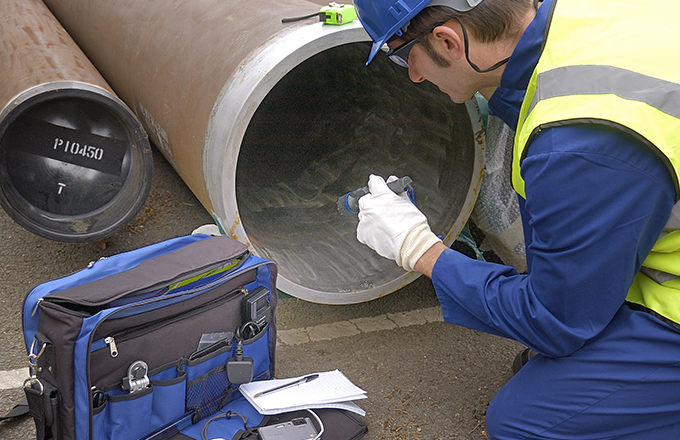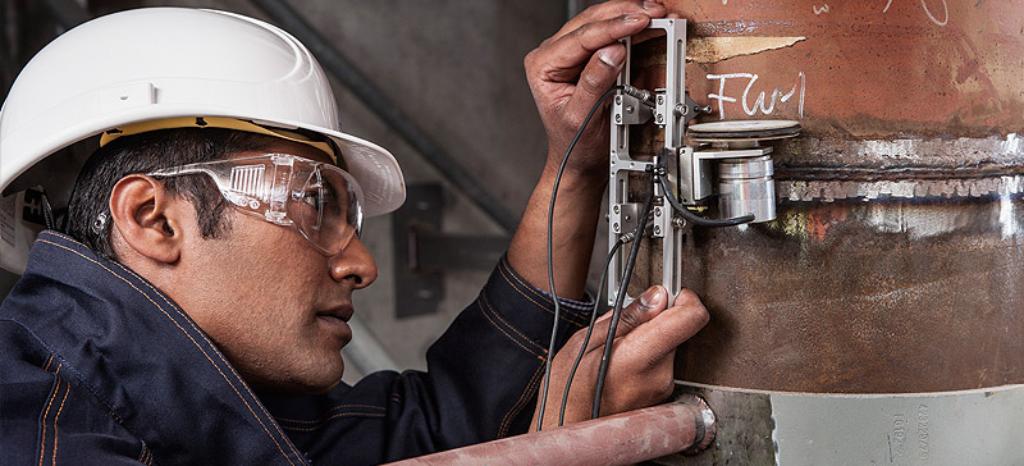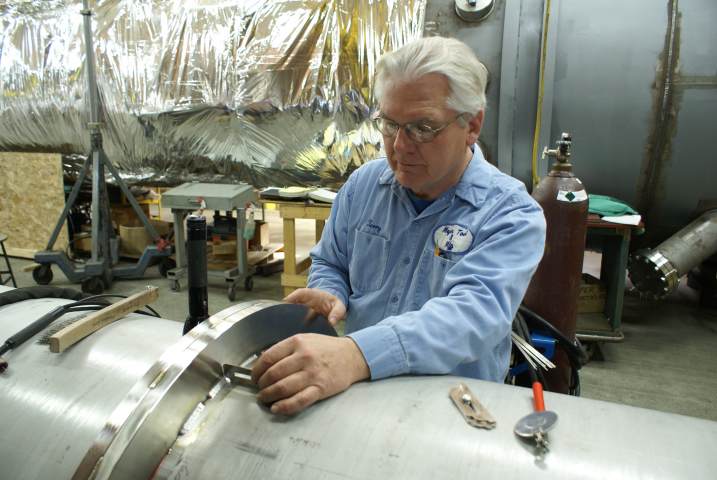Understanding the Criteria for Welding Inspection Gilbert Arizona: A Total Introduction
A Comprehensive Overview to Welding Inspection: Comprehending Specifications, Techniques, and Finest Practices for Quality Control

Welding assessment plays an essential duty in making certain the architectural honesty and safety and security of bonded parts, demanding an extensive understanding of market requirements such as those developed by AWS and ASME. Numerous examination strategies, consisting of aesthetic and ultrasonic screening, are used to detect prospective flaws that might jeopardize high quality. Moreover, carrying out finest practices can substantially improve functional integrity and foster depend on amongst clients. As we discover these crucial aspects, it becomes apparent that the effects of welding inspection prolong far beyond conformity, inviting a more detailed exam of exactly how these procedures form market standards and techniques.
Value of Welding Examination
Welding evaluation plays an essential duty in ensuring the stability and safety and security of welded structures. It is a crucial process that confirms that welds adapt predefined specs, which is essential in various industries, including building, auto, and aerospace. By conducting detailed evaluations, prospective issues such as cracks, incomplete combination, and porosity can be identified early, stopping tragic failings that could result in mishaps or expensive fixings.
The importance of welding evaluation extends past simple conformity with guidelines; it additionally promotes count on with stakeholders. Clients and regulative bodies expect assurance that the structures they rely upon are built to endure operational anxieties. Reliable welding inspection techniques add to long-term toughness and performance of the structures, ultimately leading to lowered maintenance costs.
Additionally, welding examination advertises a society of high quality within organizations, urging adherence to ideal techniques and continuous renovation. By incorporating assessment procedures right into the welding operations, firms can enhance their online reputation and develop themselves as leaders in quality control. To conclude, the relevance of welding inspection hinges on its ability to protect lives, guarantee architectural reliability, and promote industry criteria, making it a vital aspect of welding operations.
Key Industry Requirements
Making certain compliance with crucial sector requirements is vital for preserving the high quality and safety of bonded frameworks. Different companies establish these requirements to advertise finest techniques in welding and inspection. Amongst one of the most acknowledged are the American Welding Culture (AWS) and the American Society of Mechanical Engineers (ASME), which provide in-depth standards and specs for welding procedures and examination requirements.
AWS criteria, such as AWS D1.1 for structural welding, synopsis requirements for products, layout, and testing to guarantee the honesty of welds. Likewise, ASME codes, consisting of ASME Section IX, regulate the credentials of welders and welding procedures, guaranteeing constant top quality in commercial applications. Internationally, the ISO 3834 basic emphasizes top quality requirements for combination welding, providing a structure for organizations to demonstrate compliance with global finest techniques.
Compliance with these criteria not just boosts the integrity of bonded frameworks yet additionally mitigates risks linked with architectural failings. Adherence to sector criteria is typically a requirement for regulative approvals and can considerably affect task requirements. Eventually, understanding and executing these essential standards are vital for effective welding inspection and quality assurance.
Evaluation Techniques Summary
Effective welding inspection depends on a variety of strategies created to evaluate the quality and honesty of welds. These techniques can be generally classified into non-destructive and harmful testing (NDT) approaches. Non-destructive testing techniques, which are extensively favored in the industry, enable the assessment of welds without compromising the honesty of the material.
Amongst the most generally utilized NDT techniques are aesthetic assessment, ultrasonic testing, radiographic screening, and magnetic particle testing. Aesthetic evaluation is frequently the primary step in the analysis process, making it possible for examiners to recognize surface blemishes and evaluate weld grain profiles. Ultrasonic testing uses high-frequency acoustic waves to identify internal imperfections and determine the density of welds. Radiographic screening involves using X-ray or gamma-ray imaging to reveal interior issues, while magnetic bit screening is efficient for discovering surface area and near-surface interruptions in ferromagnetic materials.
Each method has its very own benefits and limitations, making it crucial for inspectors to pick one of the most appropriate technique based upon the details requirements of the project, the materials included, and the urgency of the welds being evaluated. This careful selection promotes and makes sure thorough evaluations safety and high check that quality criteria in welding procedures.

Usual Defects and Their Implications
A complete understanding of usual flaws in welds is critical for keeping architectural stability and security in welded buildings. Welding defects can considerably jeopardize the mechanical residential properties of the joint, causing failures that might jeopardize both workers and devices.
Common defects consist of porosity, which manifests as tiny gas pockets trapped in the weld metal, compromising the overall framework. Splitting is another common concern, often arising from fast cooling or improper joint layout, causing tension concentrations that can lead to disastrous failings. Insufficient fusion occurs when the weld metal falls short to properly bond with the base material, creating weak points that might cause splitting up under lots.
Various other notable flaws include undercutting, where the weld grain erodes the base metal, and slag incorporations, which can hinder the weld's stamina. Each of these defects has certain effects; as an example, porosity can minimize ductility, while cracking directly influences tensile toughness. Identifying and understanding these problems throughout inspection is necessary for implementing restorative procedures and ensuring compliance with market requirements, inevitably safeguarding the structural integrity of welded settings up.
Ideal Practices for Quality Control
Executing ideal techniques for top quality guarantee in welding processes is important for accomplishing optimum outcomes and decreasing defects. One vital method is the facility of clear welding treatments that abide by industry requirements and specs. These treatments must consist of in-depth guidelines pertaining to product option, joint prep work, and welding strategies to ensure consistency and high quality.
Routine training and qualification of welding employees are additionally crucial. Skilled welders that recognize the relevance of quality control are extra most likely to produce audio welds. In addition, carrying out a robust evaluation program, including both aesthetic and non-destructive testing (NDT), can help identify issues early in the procedure, permitting for timely restorative activities.
Documentation plays a crucial function in quality control. Preserving accurate documents of welding specifications, assessments, and repairs makes sure traceability and responsibility. Employing advanced technologies such as automated welding devices can boost accuracy and minimize the capacity for human error.
Finally, fostering a culture of high quality within the company urges workers to prioritize high quality in their job. By adhering to these finest methods, companies can enhance the stability of their welding procedures, inevitably leading to improved item top quality and decreased this article costs associated with rework and repair services.

Verdict
To conclude, welding evaluation plays a crucial duty in making sure the honesty and security of bonded frameworks. Adherence to key industry criteria, such as those developed by AWS and ASME, is crucial for reliable quality assurance. Using various inspection techniques permits for the identification of common flaws, consequently reducing prospective threats. By carrying out best practices, organizations can boost integrity, reduce upkeep costs, and cultivate trust fund among customers, inevitably adding to effective welding operations.
In addition, welding inspection advertises a culture of quality within companies, motivating adherence to finest methods and continuous improvement. In conclusion, the value of welding evaluation lies in its capacity to guard lives, guarantee architectural integrity, and copyright sector requirements, making it an essential element of welding operations.
Amongst the most identified are the American Welding Culture (AWS) and the American Society of Mechanical Designers (ASME), which supply in-depth guidelines and specs for welding procedures and inspection requirements.
Ultimately, understanding and implementing these vital criteria are crucial for effective welding assessment and top quality guarantee.
Efficient welding evaluation counts on a selection see this of strategies created to examine the high quality and stability of welds. - Welding Inspection Gilbert Arizona